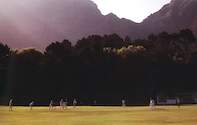Early Problems

A mere 10 years after the school’s inception, SACS was plunged into yet another crisis by the good intentions of John Fairbairn himself, who had been crusading, in his Commercial Advertiser newspaper, for a single educationist to be put in charge of the government's fragmented education system.
In April 1839 Fairbairn's persistence paid off when he was able to announce in the Advertiser the appointment of the country's first Superintendent-General of Education. The man chosen for the post was probably the most eminently qualified, and his name was James Rose Innes. Even as he was hard-pressed lecturing at SACS, he managed to draw up the first national syllabus for South African schools. But Rose Innes' departure was disastrous for the South African College.
Six months after he had left, enrolment had dropped to 35 pupils; it was left to Dr Adamson and Dr Changuoin to handle the teaching work. A year later there were only 11 students on the roll.
James Adamson then returned to SACS to teach English, Classical languages, mathematics and physics. He injected new life into the ailing institution, which in 1841 finally shook off its Dickensian beginnings and moved into new premises.
New School Premises
Funding enabled the college to go ahead with the erection of new school buildings on a site off Orange Street in the old zoological gardens — towards the top of what is now known simply as the Gardens. The college's move was a modest step (it was to be almost 50 years before plans for a college residence were realised), but at least from January 1841 the South African College could boast five classrooms in its new home.
The neo-Egyptian-style building on Government Avenue was simple but elegant. The building was based on original plans drawn up by Dr James Adamson himself and completed in detail by Colonel GG Lewis of the Royal Engineers.
Visitors who today feed the pigeons and the grey squirrels along the peaceful, oak-lined, brick-paved boulevard from Orange Street to the top of Adderley Street are but a few steps away from the truly concrete beginnings of the South African College Schools.
The college campus between Government Avenue and Orange Street is now the Michaelis Art School complex of UCT, with the 'Egyptian building' being used as sculpture studios. It was thus not only the first building to be erected for the purpose of higher education in South Africa, but has been used uninterruptedly for that purpose to the present day.
The new school premises did not bring an end to the worries that beset the South African College, however. The school was in debt and, in the years that followed the emancipation of the slaves in the Cape Colony, the settler-farmers in particular found that their traditional labour sources were thinning out and scholars from the farming areas were required to work on the lands. Attendance began to drop again, and by 1845 enrolment was below 20.
Once again a teacher came to the rescue. Hearing of the dilemma faced by the college, Sir John Herschel persuaded a young Oxford graduate, Langham Dale, to take up the challenge. Within two years of the arrival of Dale in 1846 as English Classio professor, the college seemed to surge with newfound vitality. John Fairbairn unleashed his boundless energies within a newly elected school council, professorial stipends were and enrolment doubled.
Splitting the School
Governor George Grey's generous support for the spread of higher education through the colony, and in particular his personal interest in the South African College, had much to do with the progress that was recorded in the mid-1800s. During this time the institution benefited from Grey's benevolence, receiving increased financial grants and enjoying the higher status of scholarships that, through Grey, were given the blessing of the British monarch.
In 1858 the formation of a Board of Examiners set uniform standards for examinations and later, when superseded by the examining body of the University of the Cape of Good Hope, introduced a pre-college examination that paved the way for today's matriculation system.
But as it grew and flourished, the college faced another dilemma: how to accommodate the demands not only of the senior, collegiate boys, but also of the younger boys of the preparatory classes. The answer came when Sir George Grey gave to the college an extra building, the old Slave lodge on the Orange Street property. Thus the opportunity arose for the college authorities to open a distinctly separate school for its younger pupils and, in 1874, the South African College School came into existence.
The age of admission was set at eight years and the entrance qualifications were simple ones, based on reading, writing and arithmetic. The school's first headmaster was Dr John Shaw, who had been headmaster of a school in Colesberg and who, by all accounts, was known as a strict disciplinarian who did not spare the cane in keeping his young charges under control.